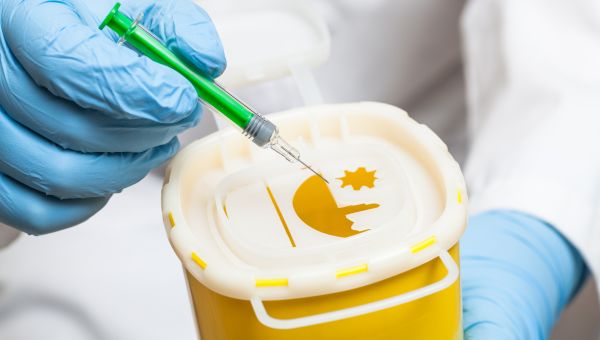How Ebola Spreads
Learn the truth about your risk of getting the deadly virus.

Nearly 40 years after Ebola was first discovered in Africa, there is still no vaccine for “one of the most deadly diseases known to man,” says Sharecare’s chief medical officer, Keith Roach, MD. That’s why it’s so important to know how the disease is and is not transmitted. Get the facts—and a healthy perspective.

Beware of Bodily Fluids
You’ve probably heard by now that the way to contract Ebola is by coming into contact with the bodily fluids of an infected person. What do these include? Blood, urine, saliva, sweat, feces, vomit, breast milk and semen, according to the Centers for Disease Control and Prevention in Atlanta. Dr. Roach points out that “you can’t get sick without being in very close contact with someone who has symptomatic Ebola—which in this country, you’re almost guaranteed not to be.”

Steer Clear of Syringes
With so few Ebola cases in the US, there is an extremely low risk of being exposed to syringes and other medical equipment that has come into contact with the Ebola virus. But healthcare workers who do care for Ebola patients—both here and in West Africa—should be painstakingly cautious around these objects, which can transmit the virus, according to the CDC.

What About Animals?
Research suggests that bats may be a source of Ebola, a type of hemhorrhagic fever that can cause bleeding in the later stages. Ebola has also been found in monkeys and other animals in the African wild (pass on the raw gorilla meat at your next gourmet gathering). But after the pet dog of an Ebola patient in Spain was euthanized, many wondered if domestic animals can spread the virus. The CDC, the US Department of Agriculture and the American Veterinary Medical Association don’t believe that pets are at much risk for Ebola in the US—and there have been no reports of dogs or cats becoming sick with Ebola or of spreading the virus.

Practice Abstinence
Even when a man recovers from Ebola, the virus can still be in his semen for up to three months. The CDC recommends abstinence from sex (including oral sex) for three months post-recovery. And if you are at all concerned that you or a loved one have been exposed to the virus, keep in mind that it can take Ebola symptoms two to 31 days to develop, and you have to be symptomatic to be contagious, Dr. Roach says.

How Ebola is NOT spread
Are you worried you could contract Ebola when a person sits next to you with a runny nose? When you eat at a restaurant? When you swim laps at the gym? Keep in mind: Coughing and sneezing aren’t likely symptoms of Ebola, and the virus is not spread by water, or in general, by food, according to the CDC. “Fortunately, in the US, the likelihood of being exposed to the virus is almost zero,” Dr. Roach says.
